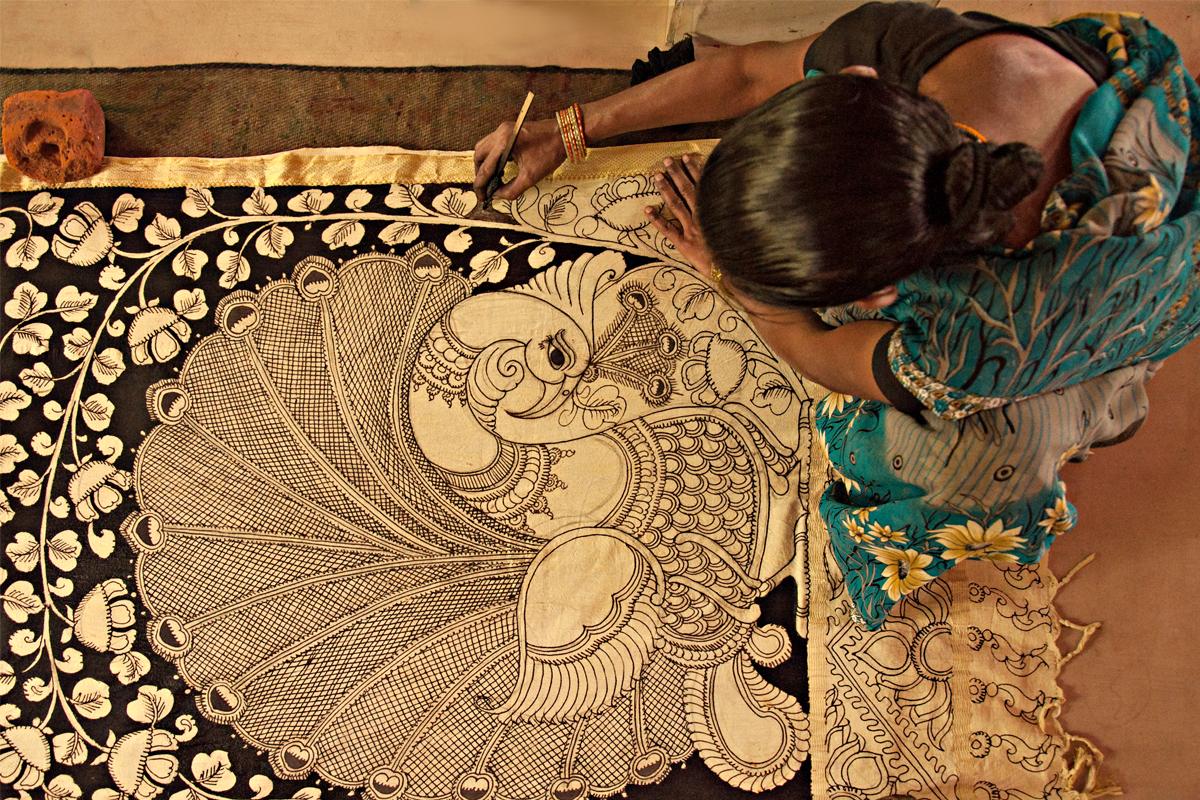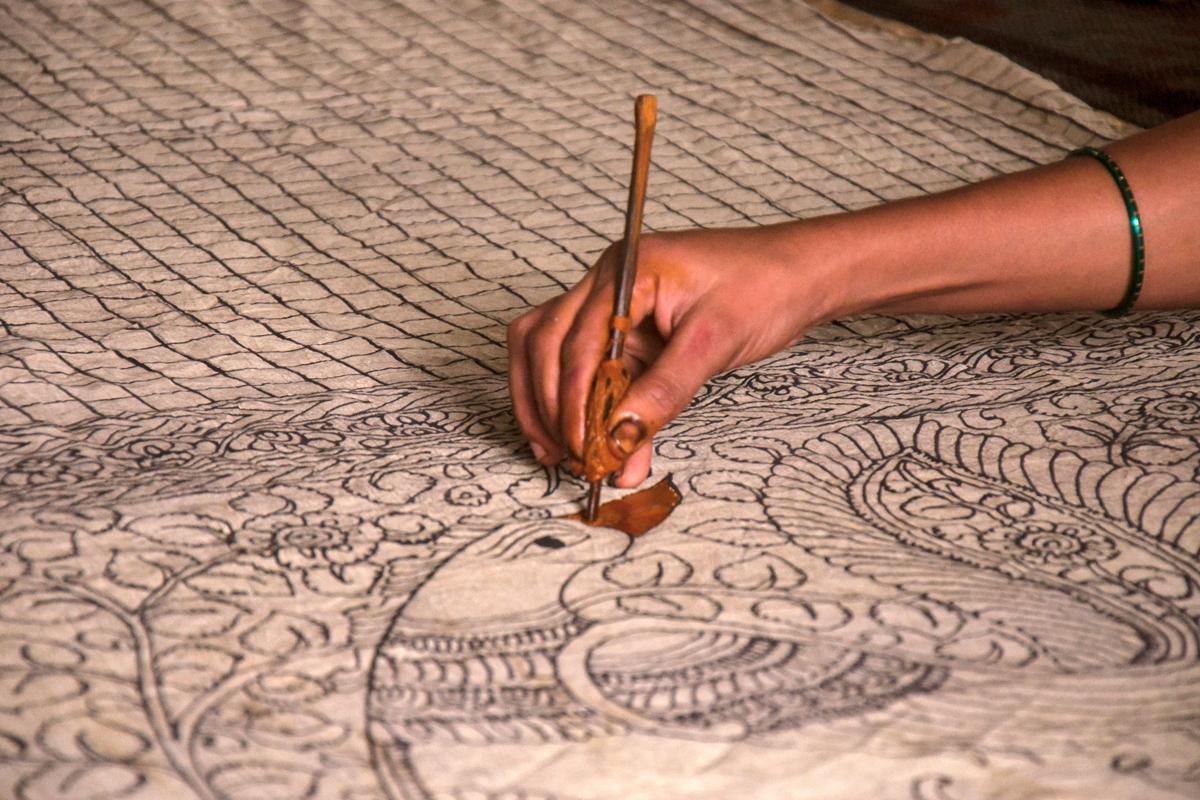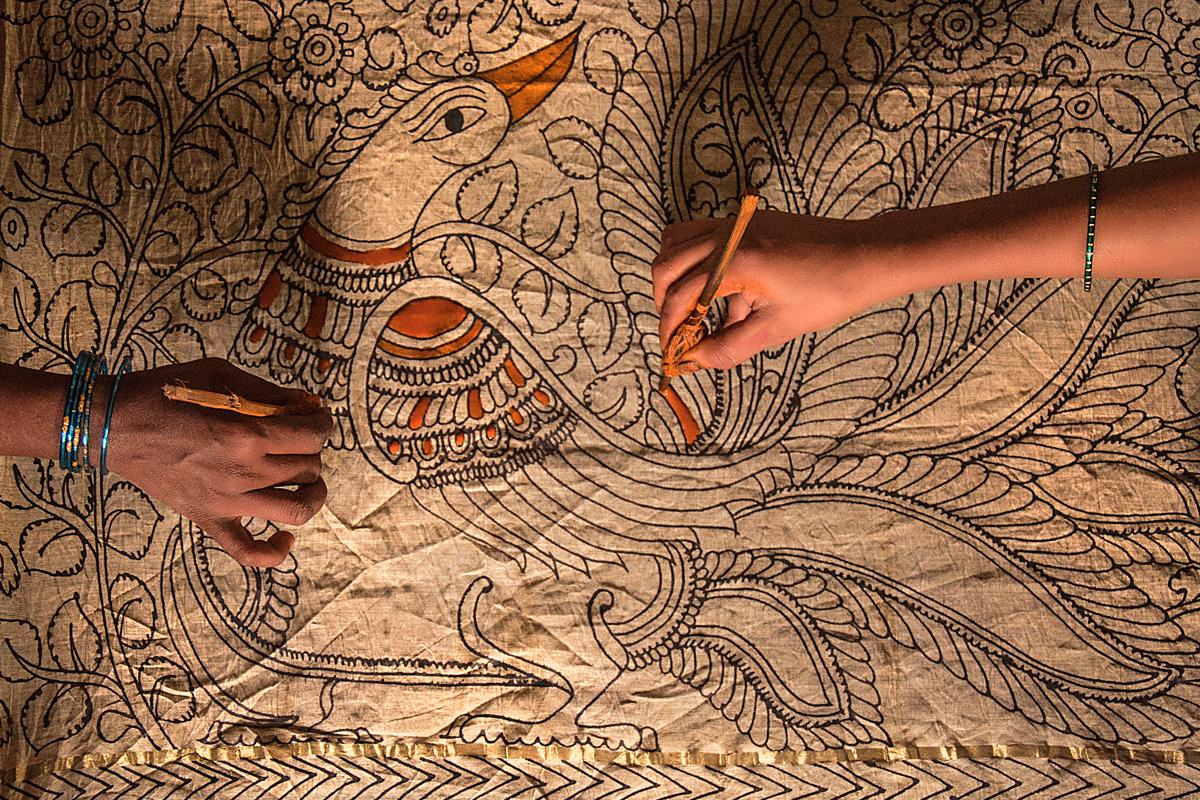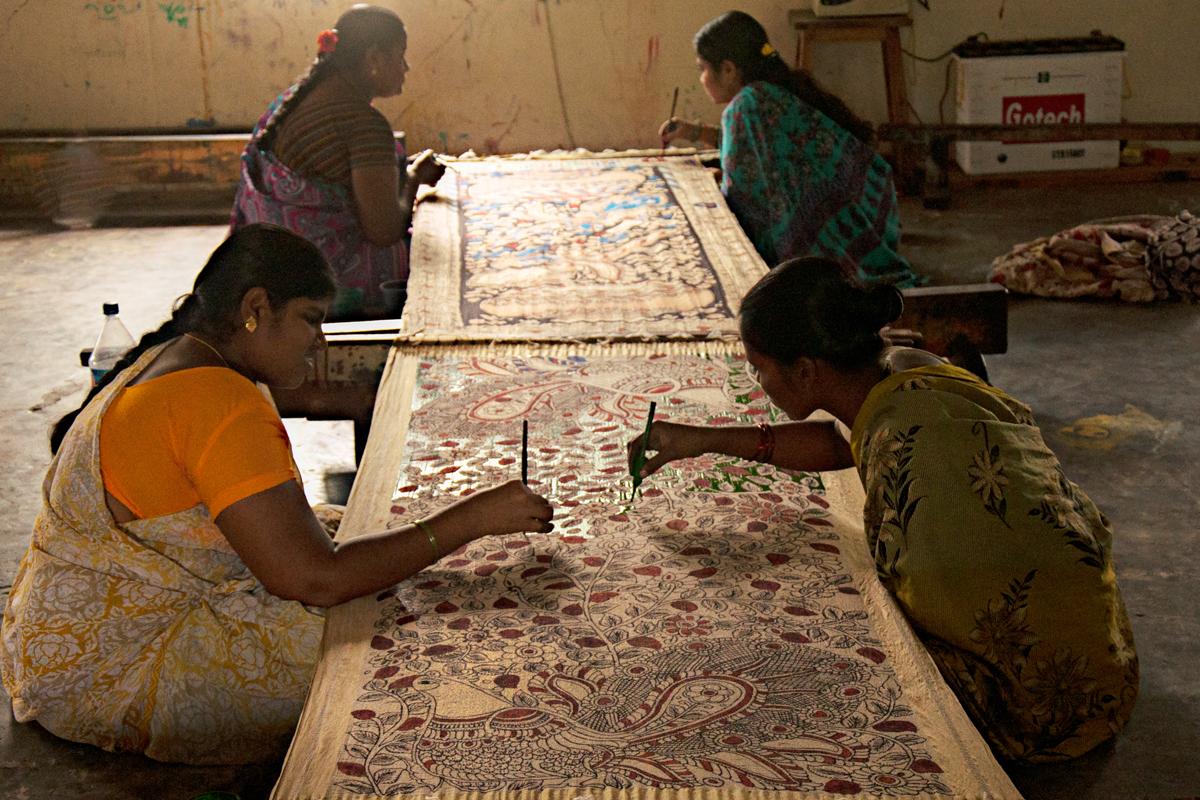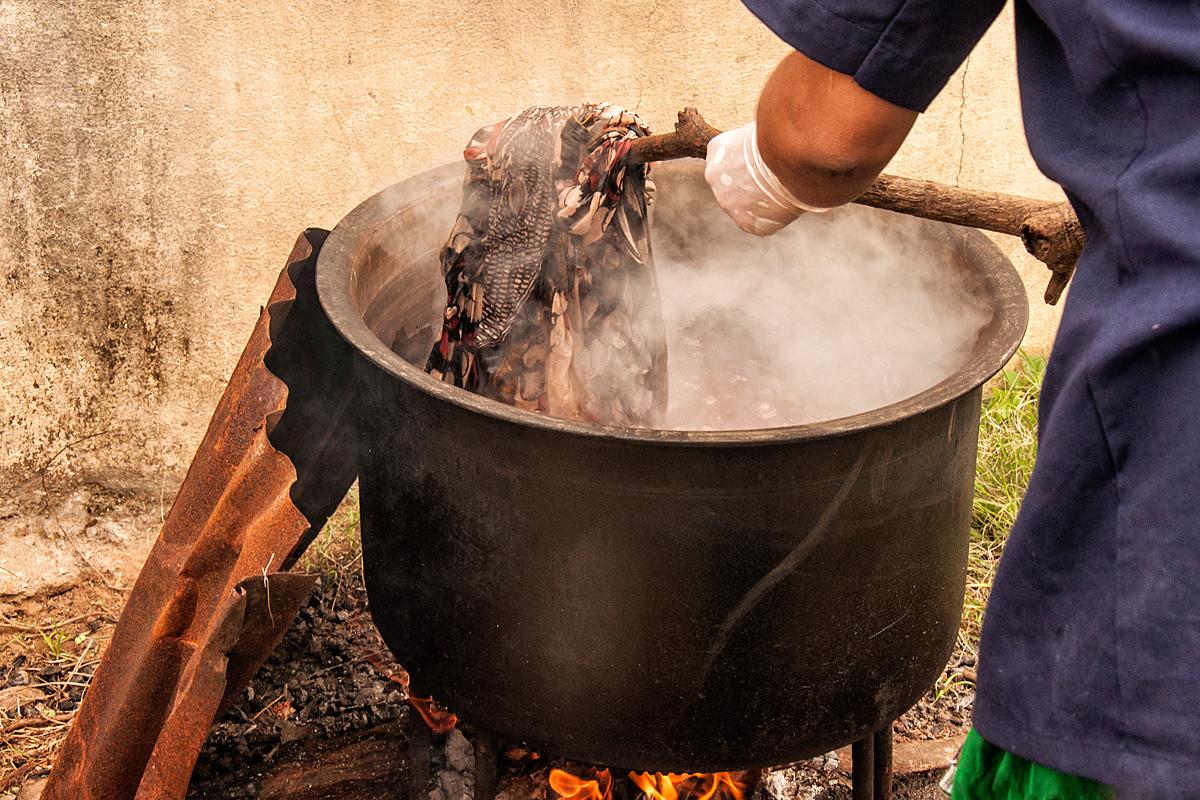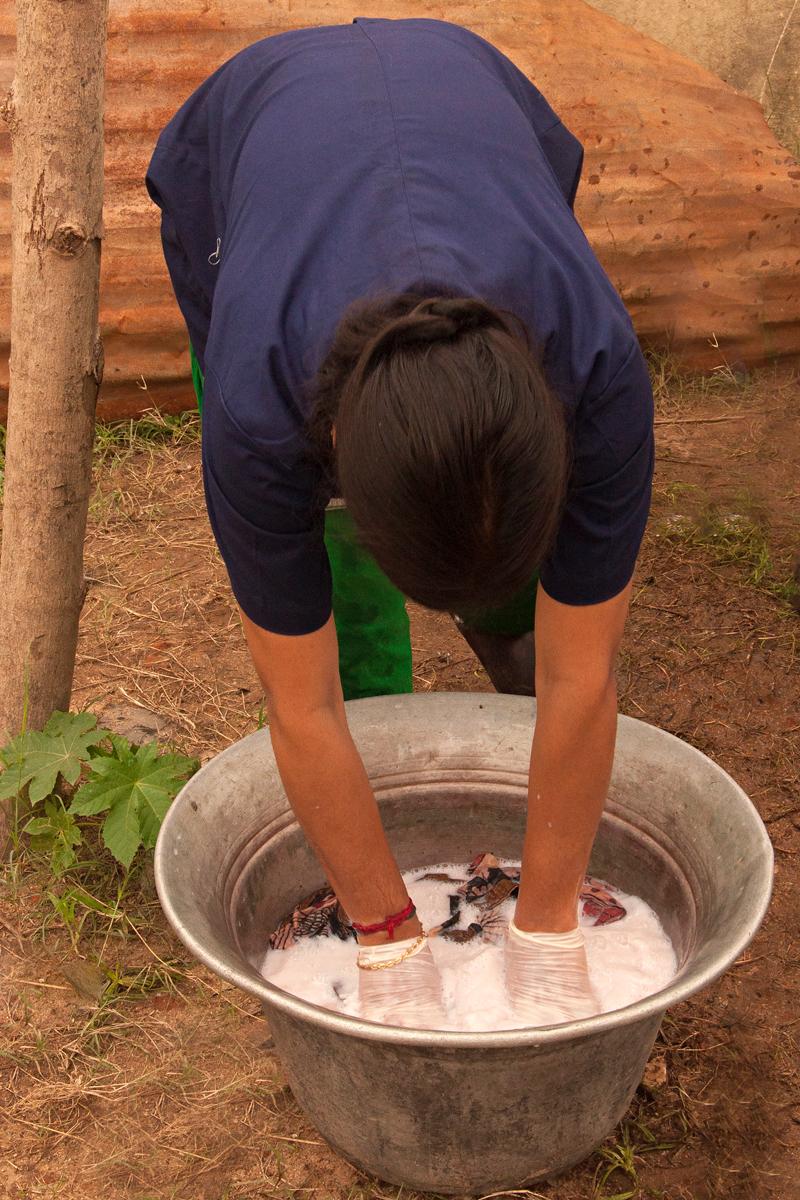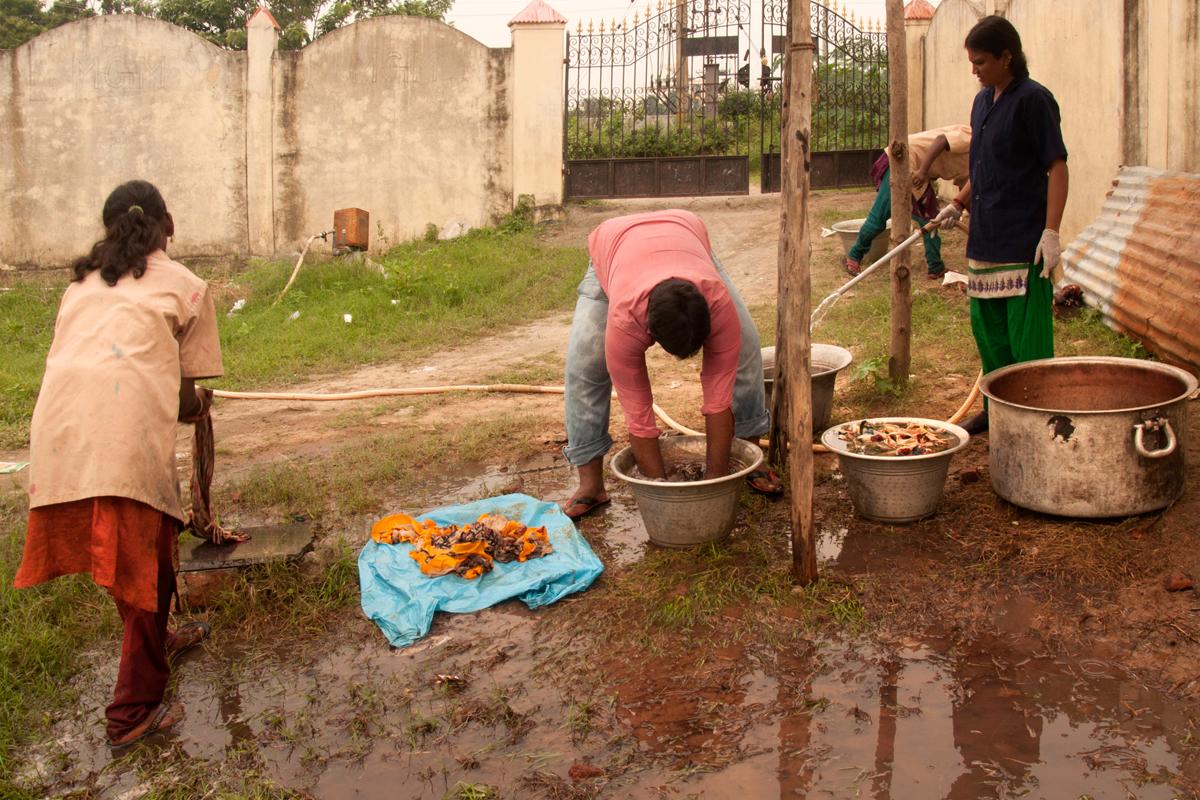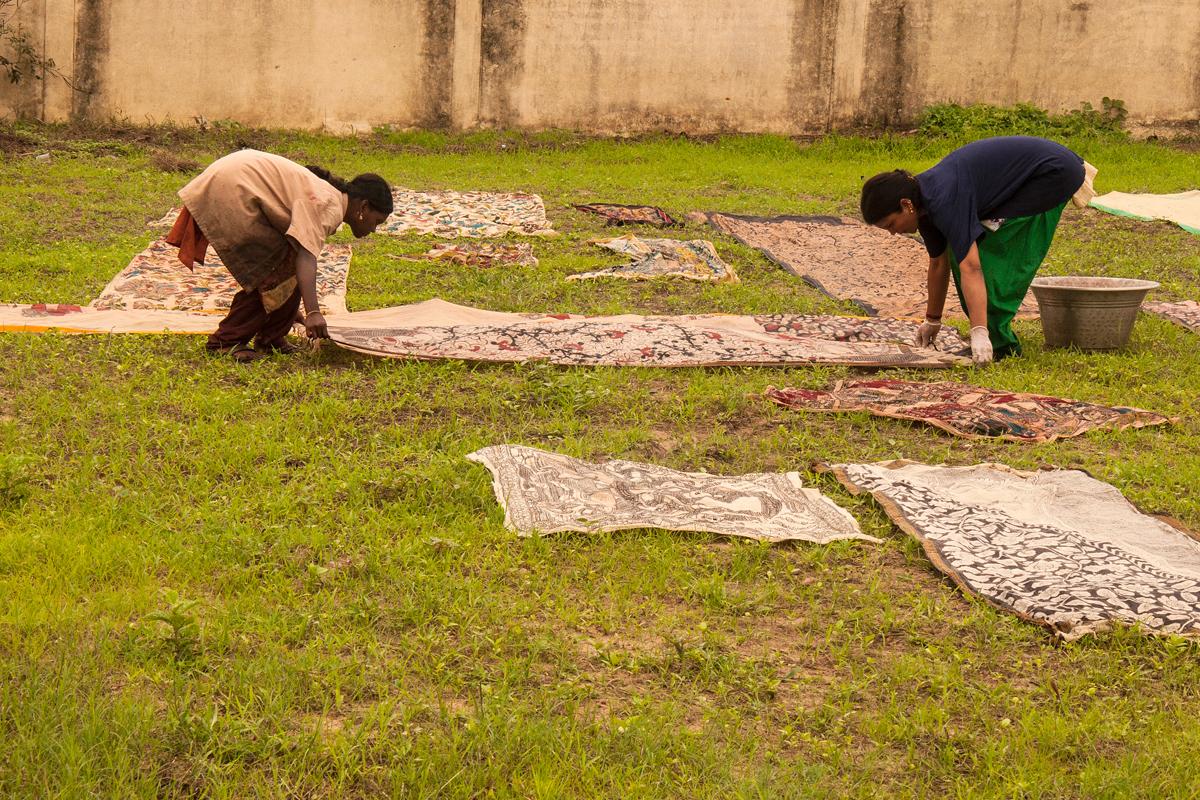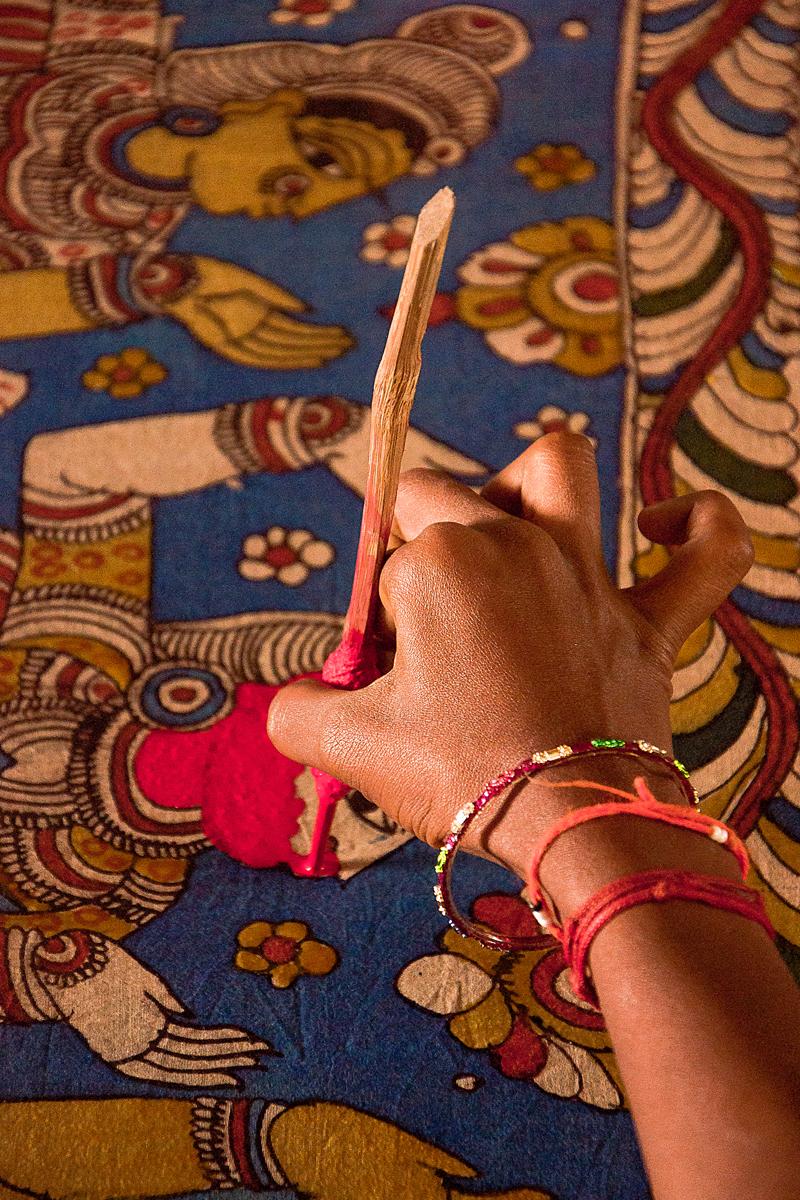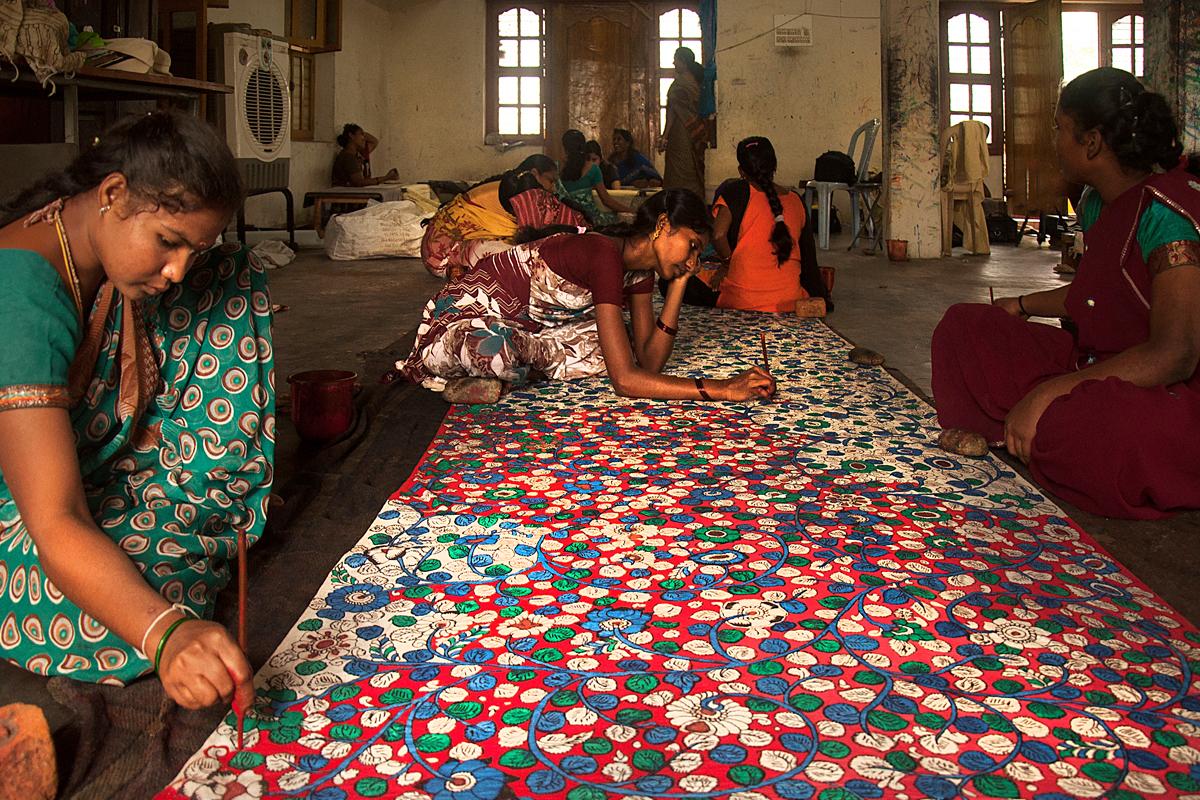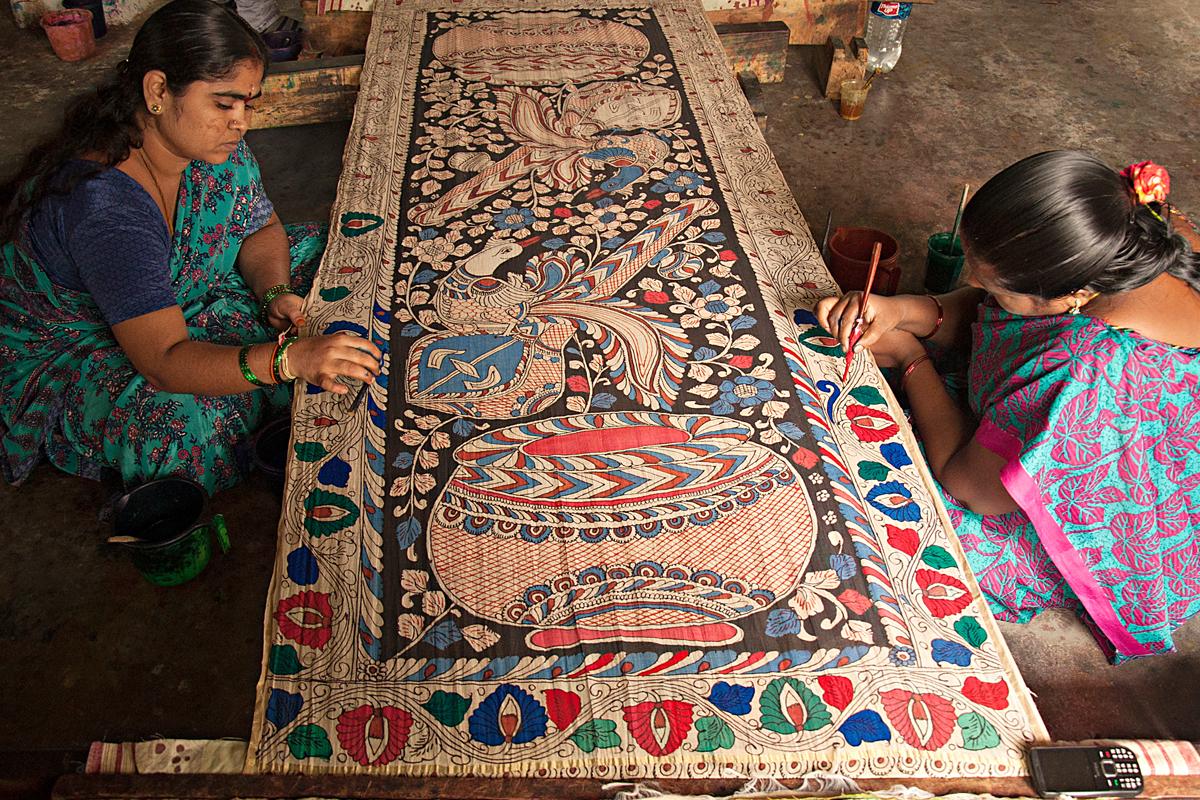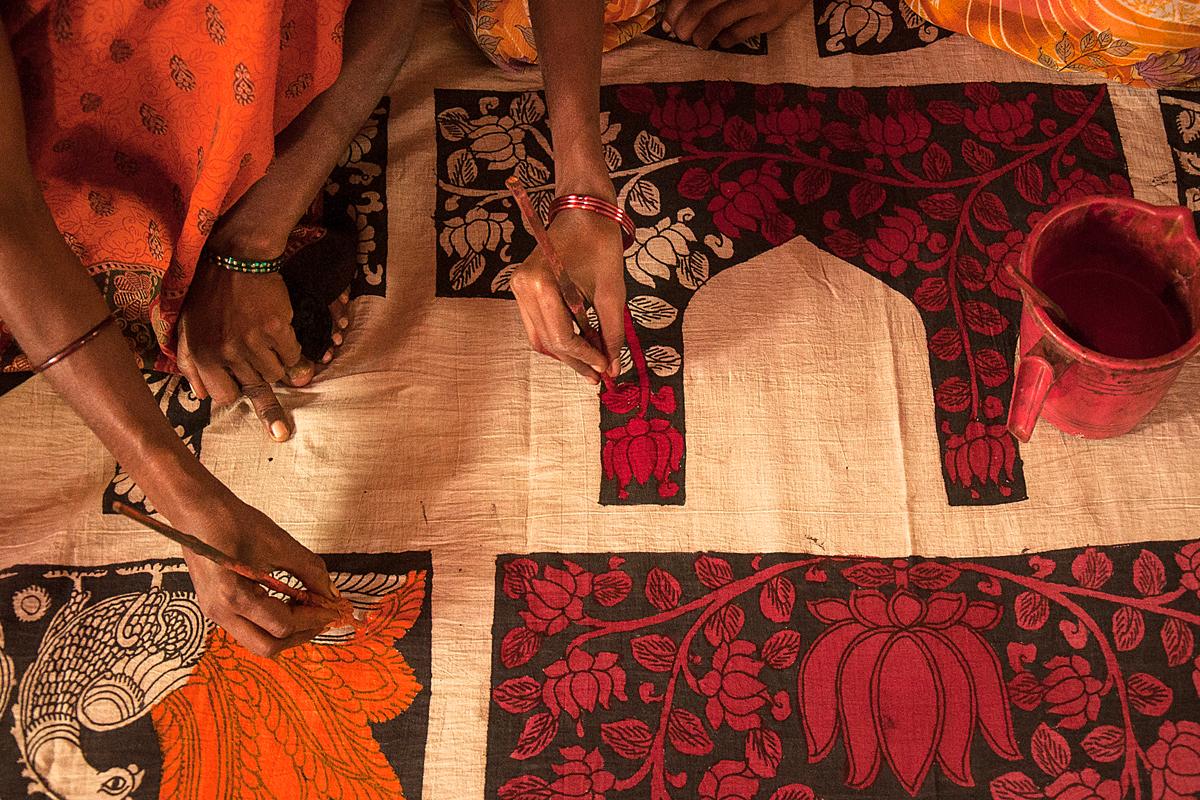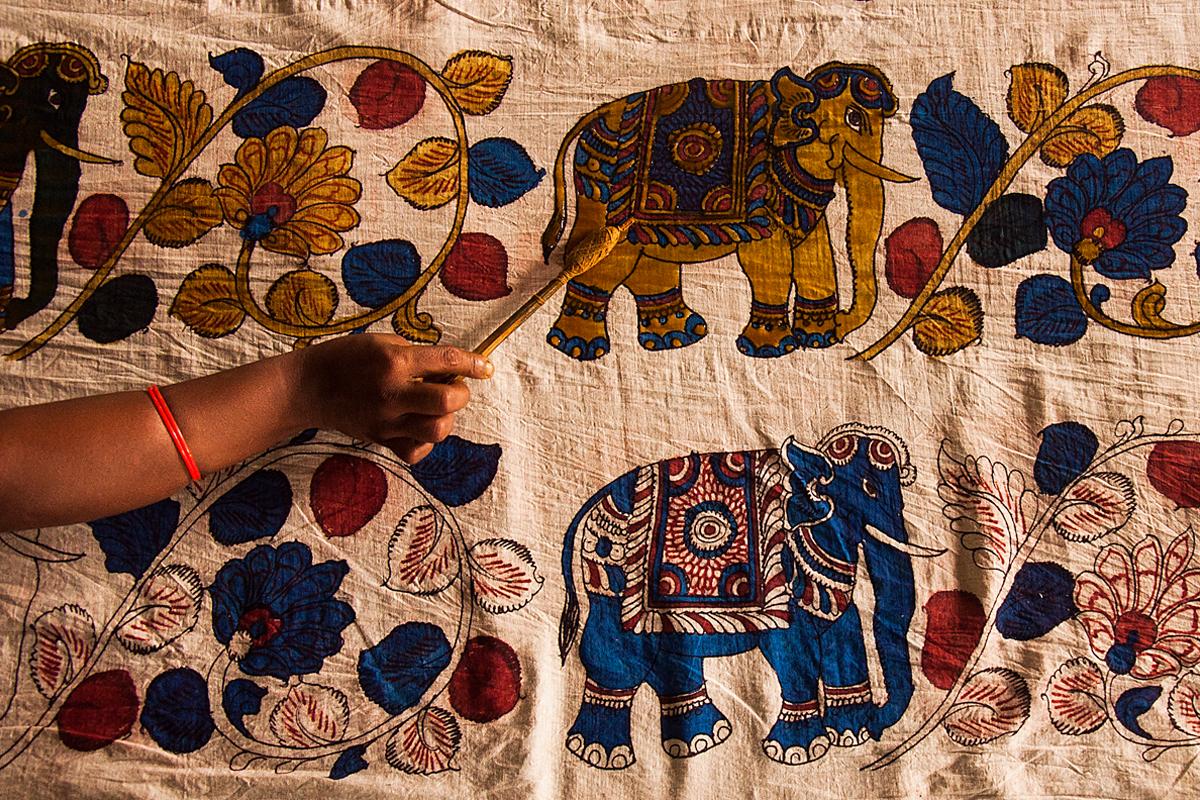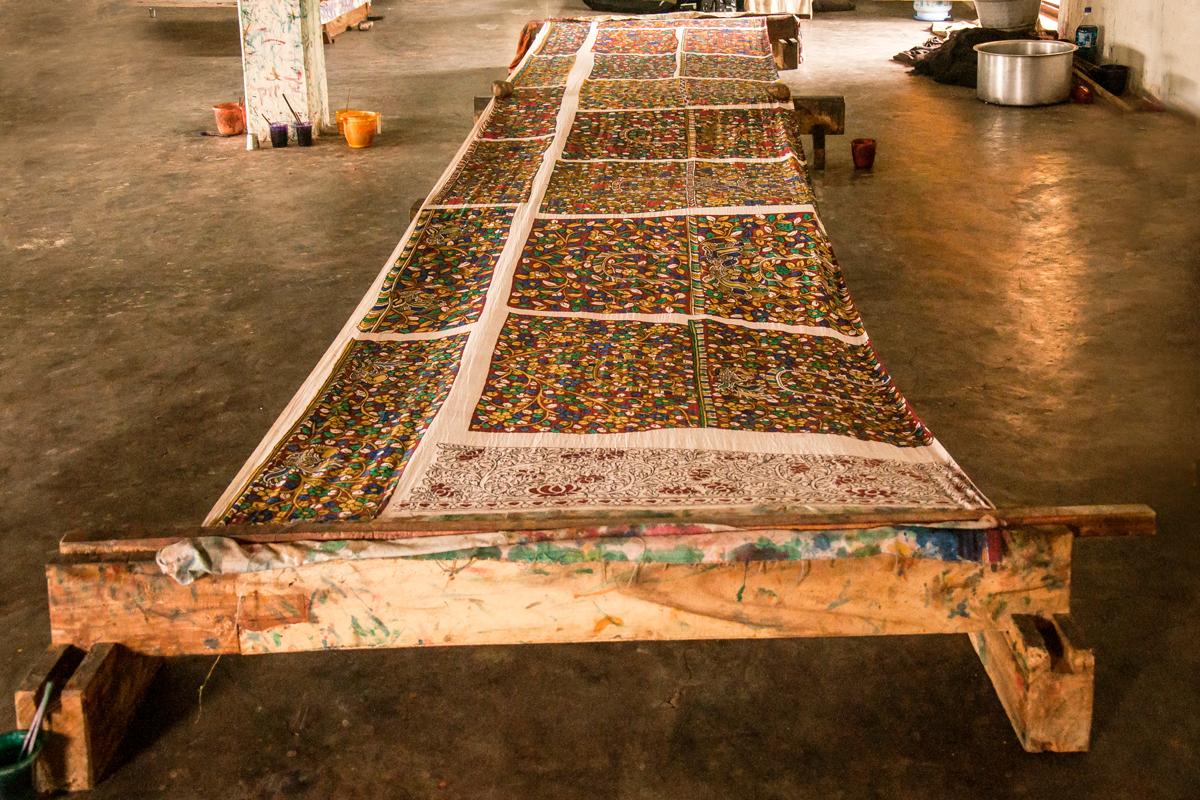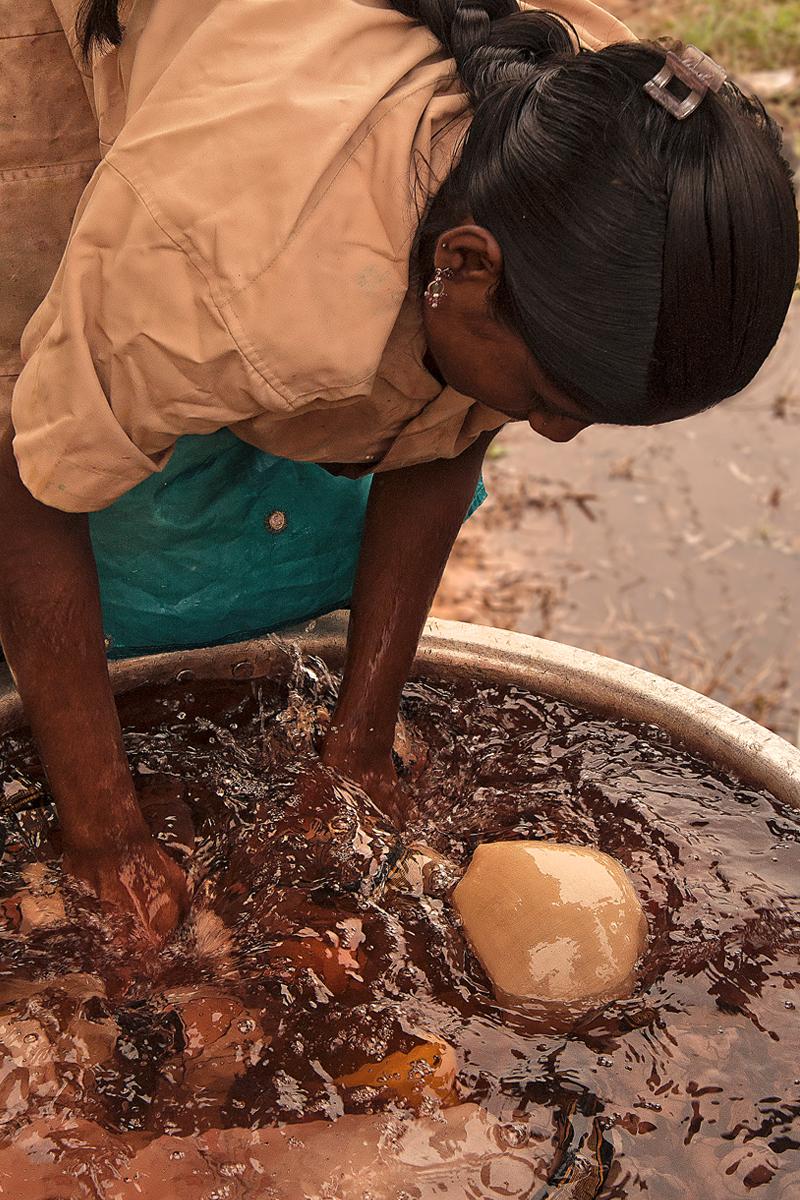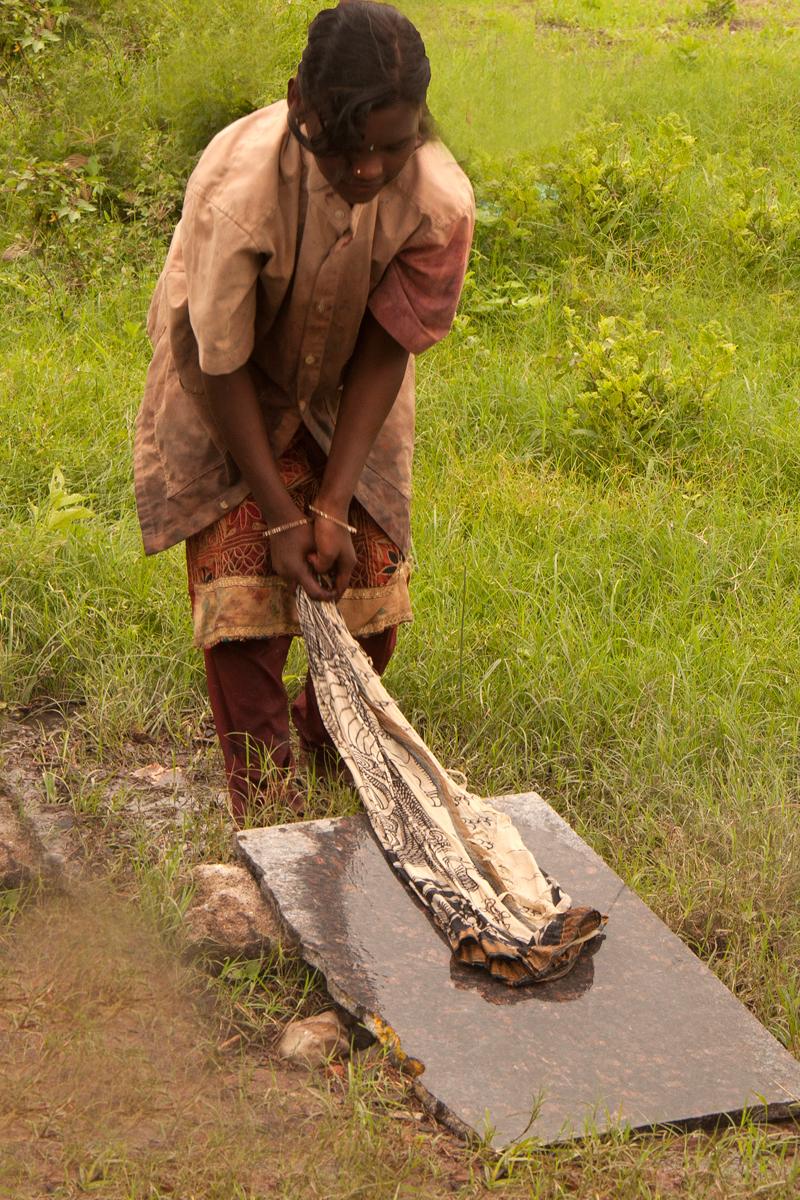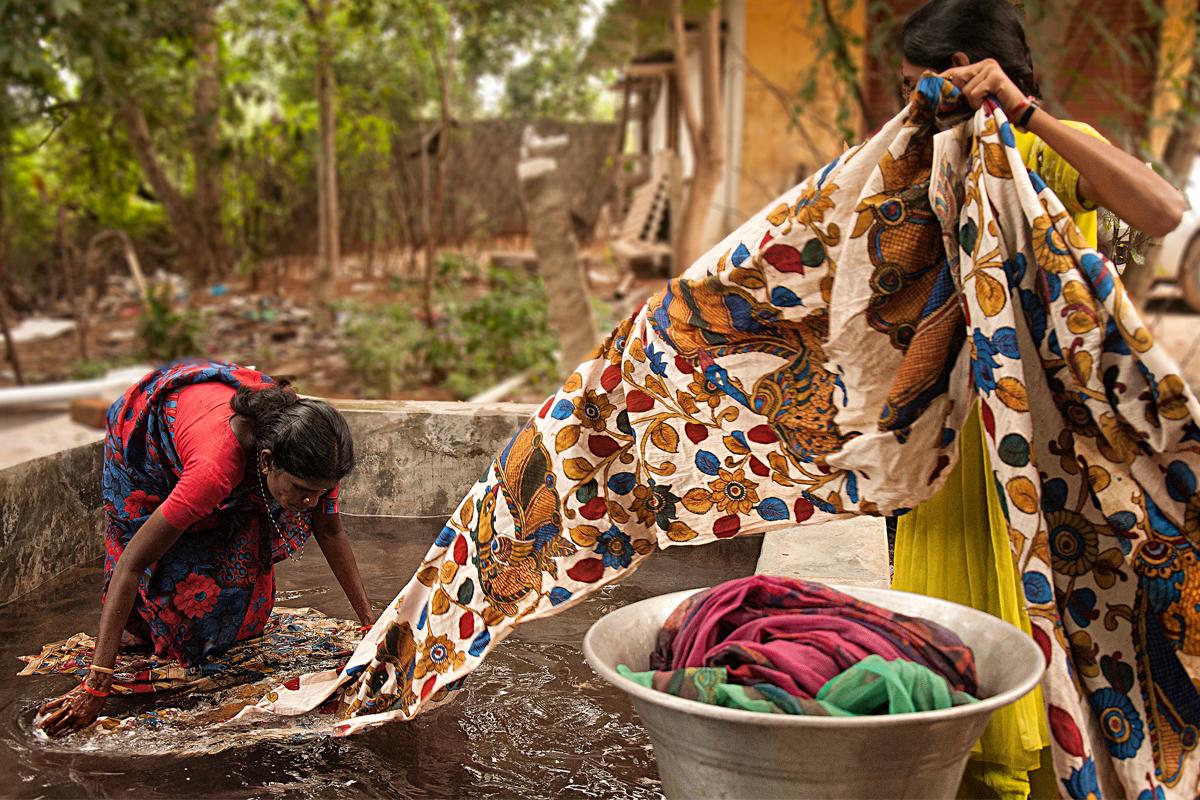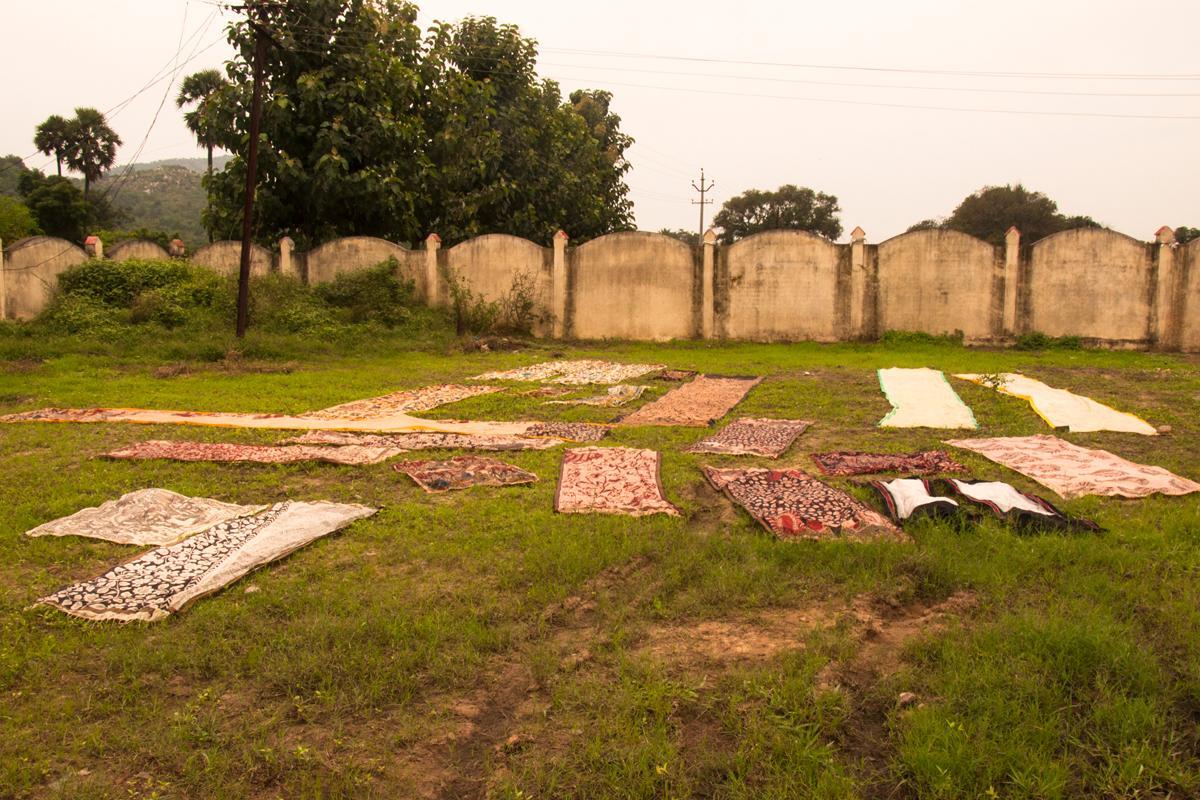Kalamkari Painting
Kalamkari designs, motifs and painting forms have emerged from inspirations from palaces, monuments and temples found in India, along with designs of wildlife. Kalamkari handmade painting are done on various fabrics like Pure Cotton, Pure Silk, Chiffon, georgette and chanderi. Pure cotton and chanderi is are the most popular fabrics used in Srikalahasti because of its unique quality making it easier for the kalamkari artist to draw and paint. It is available in Chennai, Bangalore and Maharashtra.
Setting up Wooden Frame
Wooden frame also known as kalamkari magam which is an adjustable wooden frame on two sides, once the fabric is attached at one end it is then stretched slightly to the other end secured and locked using a wooden piece locally called karra. The wooden frame can be adjusted even at the later stages if the artisan requires more elasticity in the fabric. Usually thin cloth goes on to the frame because it easier to draw and paint, much thicker fabric like cotton are laid on the ground with a woolen cloth underneath for protection.
Painting on Fabric
After the outlines on the fabric are drawn using kassim karam / black using the kalamkari pen, the fabric is stretched full length on the ground or on the kalamkari maggam (wooden frame), and then the colouring filling process starts. On a single cloth up to ten artisans take up separate spaces to fill colour in different areas. Karaka pooh (maroon) and alum is mixed together to form a solution, alum is basically colourless but also acts as an highlight to the colour when painted, it also is a natural mordant which makes the colour stick firmly to the fabric. The areas, which are to be filled in red/ maroon, are first painted and then left to dry under diffused sunlight for 1 to 2 days until the fabric absorbs the colour completely. The fabric is washed in a rhythmic manner making sure that excess alum is removed, flowing water is best suitable, as the excess alum and colour removed from end should not stick to the other end of the fabric. Cloth is then dried well under direct sunlight and boiled in water with temperatures of around 80º to 100º Celsius and dried. The fabric is again soaked in pure milk and dried. Milk acts as wax, which prevents colour from spreading on the fabric when other colours are applied later on. The fabric is then painted with vibrant colours using kalamkari pen, different colours such as grey, yellow, golden and blue are painted. Alum is used in all colours because it possess a mordant quality. Wet cotton is gently pressed on the coloured area to remove excess colour. Finally the cloth is soaked in luke-warm water to remove excess alum and colour, it is again washed in flowing water to remove impurities and then ironed which is ready to be sent to the customer. Kalamkari painting on sarees can take up to 50 days to complete depending on the design and pattern. Running designs are much common in the present times however every master kalamkari artist have their own style and creativity to implement various styles of designs and motifs.

